Product
Location:Home > Product > Geotextile

Scan QR code
Polyester filament geotextile is a material made directly by spinning, needle punching, and consolidation using polyester method, which has excellent heat and light resistance properties.
Material: PET/PP
Width: 1-6M
Weight: 100-800 g/m2
Thickness: 1.0-5.0 mm
Customization: Various specifications can be processed and customized according to customer requirements
Function:
1. Filtration
2. Underground drainage
3. Road separation/railway stability
4. Geomembrane buffering
5. Reinforcement
6. Protection
Application:
1. Road stability construction 2. Roof 3. Civil construction
4. Railway construction 5. Garbage landfill 6. Dam
7. Port and dock construction, etc
Geotextile is a new type of building material, made from synthetic fibers of high molecular polymers such as polyester, polypropylene, acrylic, and nylon. Non woven geotextiles are mainly used in general engineering. Geotextiles have various functions such as anti-seepage, filtration, drainage, isolation, reinforcement, protection, sealing, etc. They have the advantages of low investment, simple construction process, short construction period, good anti-seepage effect, and high channel utilization coefficient.
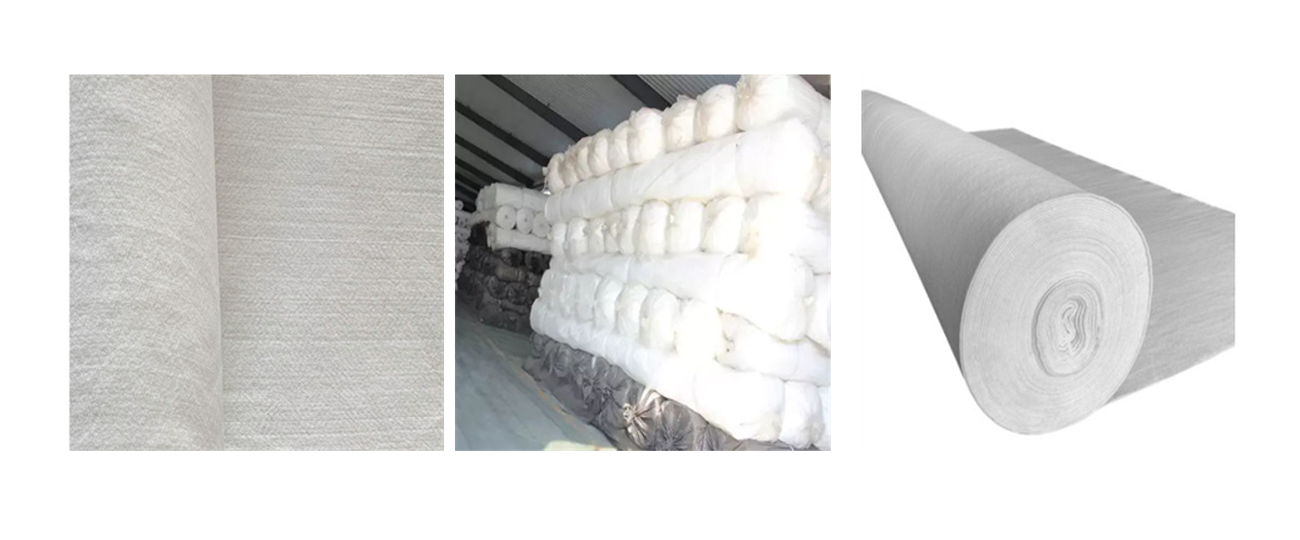
Can exert long-term isolation effect
Can isolate soil layers composed of different components and properties for a long time and prevent mixing; It has frost resistance and load-bearing requirements required for construction.
Having good filtration performance and anti-corrosion performance
Water can penetrate in all directions without accumulating pressure. At the same time, it can prevent soil loss, which is beneficial for stability and anti-corrosion performance.
Has reliable drainage performance
Due to its fluffy structure, it can effectively control the drainage of geotechnical engineering surfaces.
Has good protective performance
Due to its excellent puncture resistance, elongation, and fluffiness, it can effectively protect the waterproof layer from potential mechanical damage.
With reinforcement performance
The fluffiness and high strength improve the overall stability of the project and increase its strength
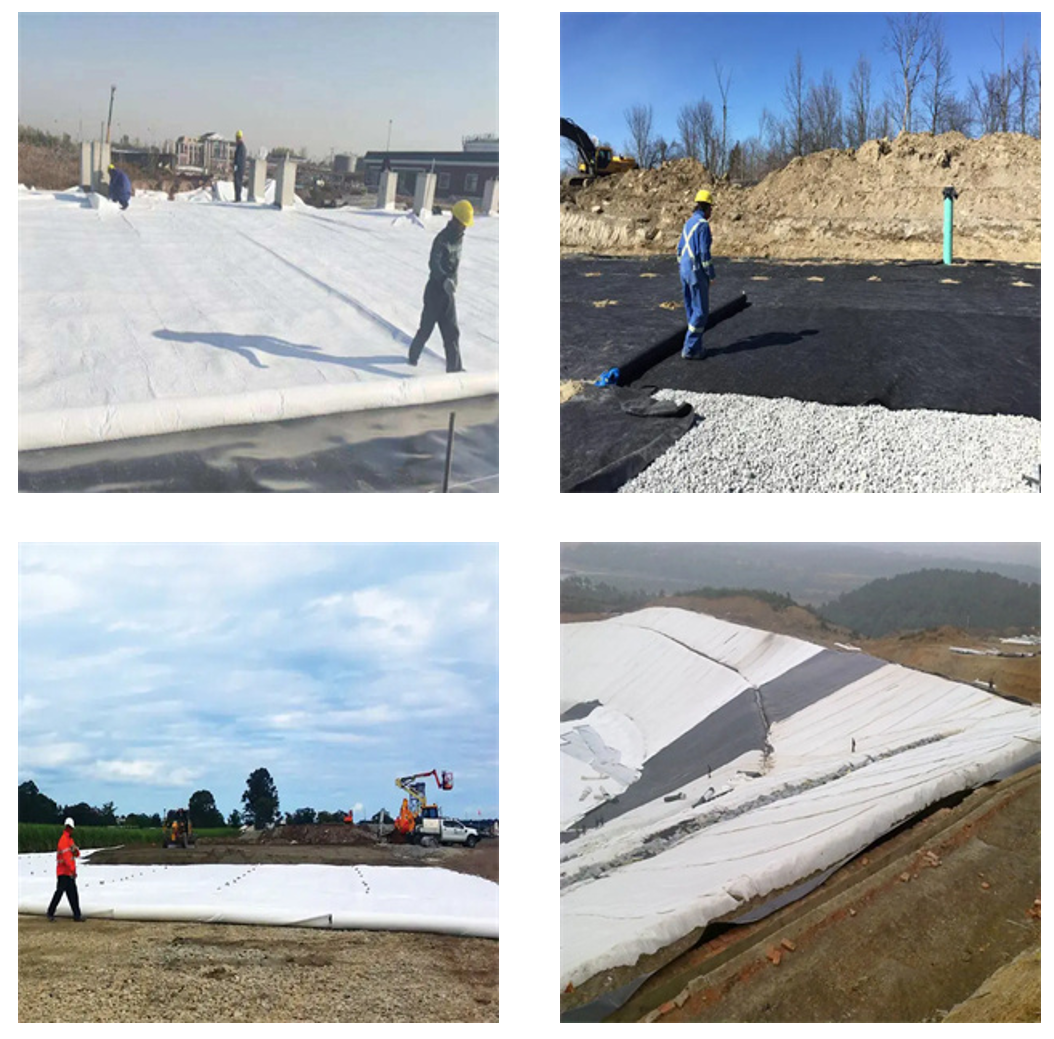
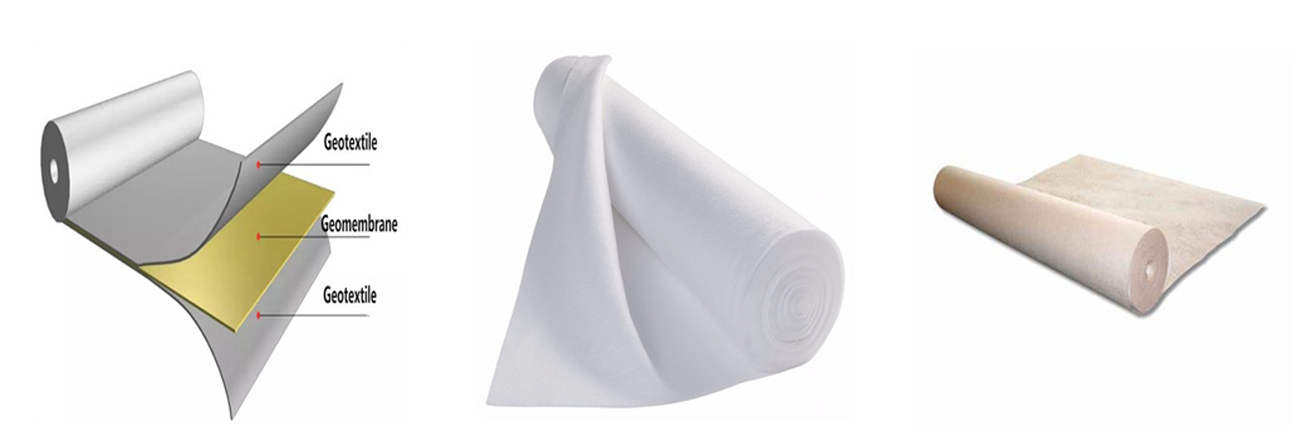
Num | Project | Specification Indicators | ||||||||||
100 | 150 | 200 | 250 | 300 | 350 | 400 | 450 | 500 | 600 | 800 | ||
1 | Mass deviation per unit area/% | -6 | -6 | -6 | -5 | -5 | -5 | -5 | -5 | -4 | -4 | -4 |
2 | Thickness(mm) | 0.8 | 1.2 | 1.6 | 1.9 | 2.2 | 2.5 | 2.8 | 3.1 | 3.4 | 4.2 | 5.5 |
3 | Width deviation% | -0.5 | -0.5 | -0.5 | -0.5 | -0.5 | -0.5 | -0.5 | -0.5 | -0.5 | -0.5 | -0.5 |
4 | Breaking Strength KN/m | 4.5 | 7.5 | 10.5 | 12.5 | 15 | 17.5 | 20.5 | 22.5 | 25 | 30 | 40 |
5 | Breaking elongation% | 40-80 | 40-80 | 40-80 | 40-80 | 40-80 | 40-80 | 40-80 | 40-80 | 40-80 | 40-80 | 40-80 |
6 | CBR bursting strength KN | 0.8 | 1.4 | 1.8 | 2.2 | 2.6 | 3 | 3.5 | 4 | 4.7 | 5.5 | 7 |
7 | Equivalent Aperturemm | 0.07-0.2 | 0.07-0.2 | 0.07-0.2 | 0.07-0.2 | 0.07-0.2 | 0.07-0.2 | 0.07-0.2 | 0.07-0.2 | 0.07-0.2 | 0.07-0.2 |
|
8 | Vertical permeability coefficientcm/s | (1.0~9.9)*(0.1~0.001) | ||||||||||
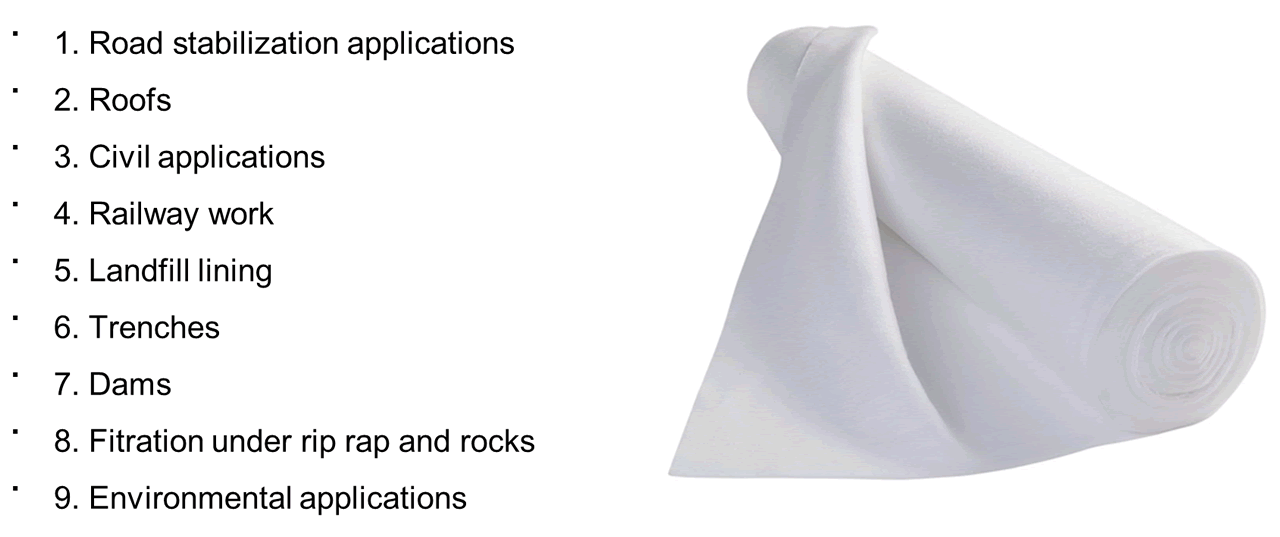
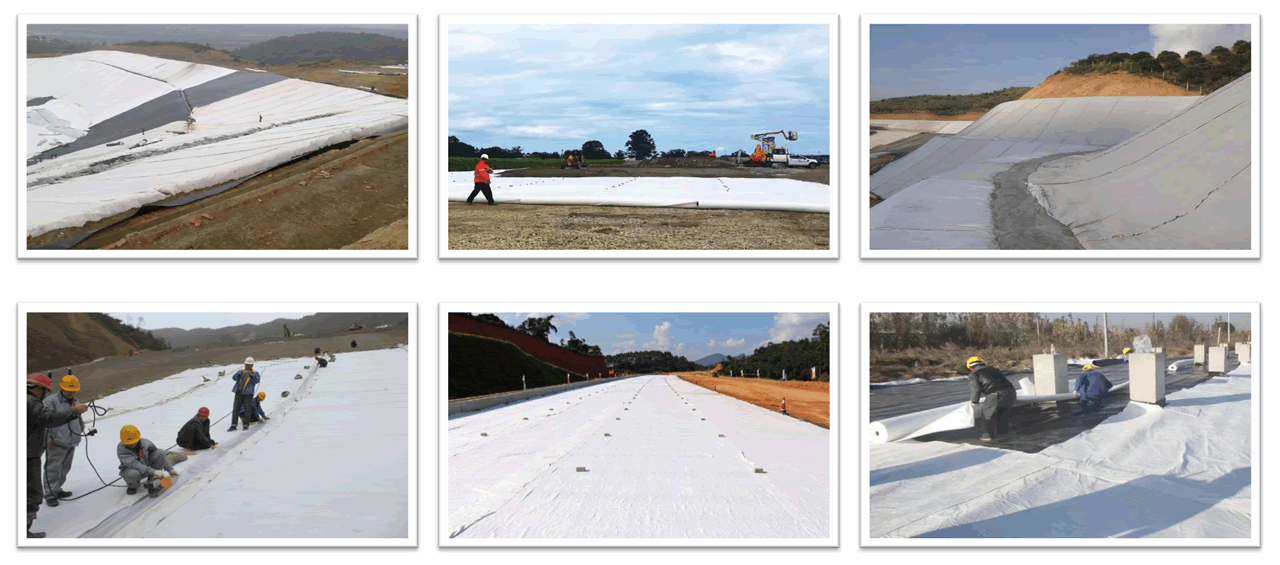
1. Storage, transportation, and disposal of geotextiles
The geotextile roll should be protected from damage before installation and unfolding. Geotextile rolls should be stacked in a flat and waterlogged area, with a height of no more than four rolls and visible identification plates of the rolls. Geotextile rolls must be covered with opaque material to prevent UV aging. During storage, it is important to maintain the integrity of the labels and information.
During the transportation process (including on-site transportation from the material storage location to the work site), the geotextile roll must be protected from damage.
Geotextile rolls that have been physically damaged must be repaired. Geotextiles that are severely worn cannot be used. Any geotextile that comes into contact with leaked chemical reagents is not allowed to be used in this project.
2. Laying method of geotextile:
2.1 Manual rolling and paving; The fabric surface should be flat and have appropriate deformation allowance.
2.2 The installation of long or short wire geotextiles usually involves several methods such as overlap, stitching, and welding. The width of stitching and welding is generally above 0.1m, and the overlap width is generally above 0.2m. Geotextiles that may be exposed for a long time should be welded or sewn together.
2.3 Suturing of Geotextiles
All stitching must be continuous. Before overlapping, the geotextile must overlap by a minimum of 150mm. The minimum needle distance from the edge of the fabric (exposed edge of the material) should be at least 25mm.
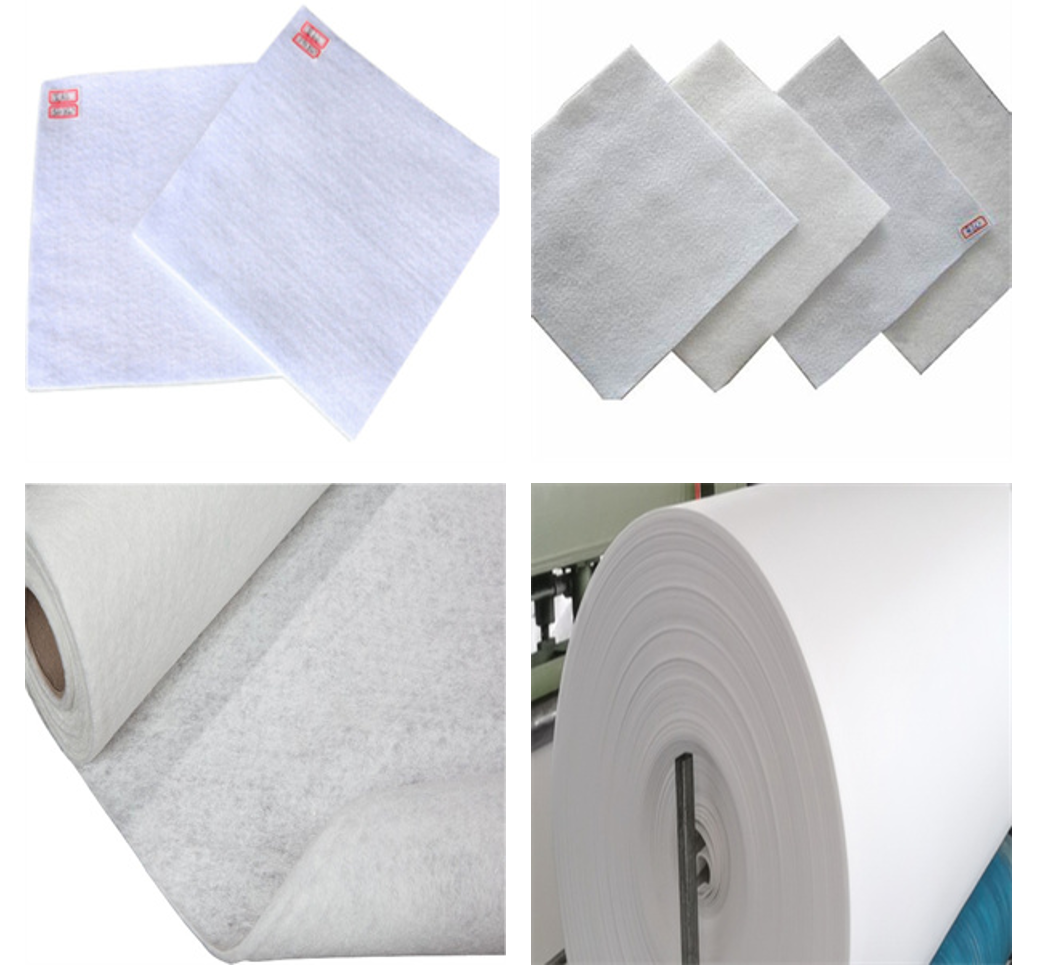
Pay attention to the following issues:
① The laying of geotextile should be as flat as possible to avoid twisting and wrinkling, and should be kept smooth and moderately loose. The geotextile and the base layer should be pressed flat and tightly, avoiding overhead and removing bubbles to ensure safety.
② The geotextile should be properly stored during transportation and upon arrival at the construction site. Although it is non-woven geotextile, it should be avoided from prolonged exposure to sunlight, prevented from bonding into blocks, and stored in an undamaged and convenient place to minimize loading and unloading times.
③ The splicing method and overlapping length of geotextile should meet the requirements of the construction drawings.
④ Before the construction of geotextile joints, process tests should be conducted to ensure that the joint quality meets the design requirements and specifications.
⑤ The geotextile splicing site should be clean and tidy to prevent sharp and hard debris from puncturing the geotextile. The processed geotextile should be kept away from light.
⑥ Before laying, clean the laying surface, remove sharp stones, and do not damage the geotextile. If there is any damage, it should be repaired.
⑦ When laying, it is necessary to ensure the accurate position of the geotextile, and the sand bag should be promptly thrown to prevent displacement of the geotextile.

Previous : Short fiber needle punched non-woven geotextile
Next:Last
Hot Keywords:GeocellGeogridGeotexileGeocompositeGeomatGeomembrance